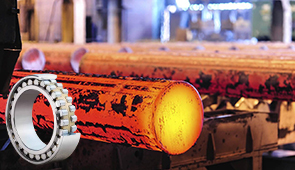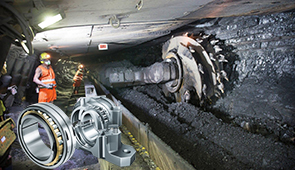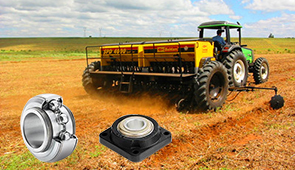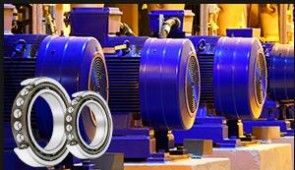Spindle Machining: Technology, Tools, and Performance in Modern Manufacturing
Spindle machining stands at the core of modern manufacturing processes, serving as a critical component in achieving precision, efficiency, and reliability in production. From advanced CNC (Computer Numerical Control) systems to cutting-edge tool designs, the evolution of spindle technology has revolutionized the way industries approach material cutting, drilling, and milling. This article dives deep into the intricate world of spindle machining, exploring the latest technologies, innovative tools, and performance metrics that drive productivity in today’s competitive manufacturing landscape. Whether you are an industry professional seeking insights or a curious learner eager to understand the mechanics behind manufacturing excellence, this comprehensive guide will illuminate the essential role spindle machining plays in shaping the future of industrial innovation.
Introduction to Spindle Machining
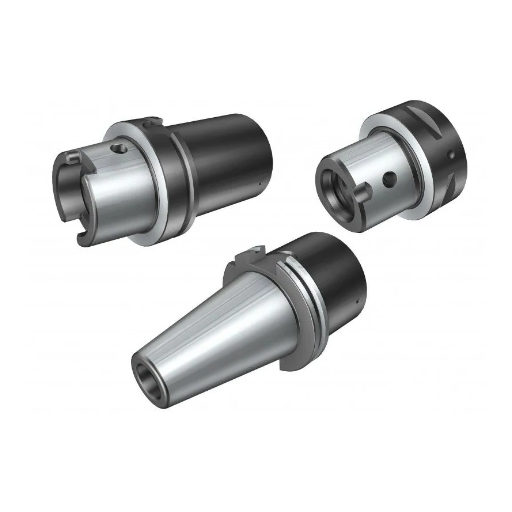
What is Spindle Machining?
The spindle machining process uses a base spindle of a machine to rotate a cutting tool or workpiece at high speeds, performing different industrial operations like drilling, milling, turning, and grinding. The spindle is at the heart of this process as it enables the transmission of motion and power from a motor of a machine to the cutting tool or workpiece upon which the actual removal of material and shaping takes place. The practice of modern spindle machining is borne out of better design, materials, and control systems to promote accuracy and efficiency.
This means that, at the root of spindle machining, we try to assist various mechanical processes by imparting rotational movement in the achievement of specified parameters for a manufactured part. The maximum number of spindles is powered by electric motors. Among such electric motors, some supply direct coupling between the motor shaft and spindle, while others employ gearing mechanisms in between to obtain the final speed. The cutting speed with feed rate must be adjusted to achieve precision with optimum tool life and surface quality of the material to be worked. Depending on these, spindle machining can deal with different materials and requirements from the aerospace industry to the automotive industry.
The versatility and precision of spindle machining offer various possibilities for modern industrial processes. At the same time, enhancements made to spindle machining included high-speed spindles and multi-axis configurations, and cooling systems. Due to the great precision offered by spindle machining, tight tolerances of very complex geometries can be produced rapidly and repeatedly, ensuring that the process is still very much needed in fulfilling the quality demands of today’s competition.
How Spindle Machining Works
Essentially, spindle machining involves the rotation of a spindle that drives cutters or workpieces in any manufacturing process. The spindle’s motor imparts such rotation that tools such as drills, end mills, or lathes move materials away along certain paths. A good and accurate system is maintained through a fine control of feed and speeds, which depend on the material and complexity of the design.
First, the workpiece is securely clamped or mounted while cutting tools are attached to the rotating spindle. Then, either through an operator or automatically, the spindle is set to rotate at a speed and feed rate suited for the task at hand. To maintain constant parameters, sensors and feedback ensure that they do not fluctuate, hence providing a tight tolerance. And generally, cooling and lubrication systems are also applied to reduce heat generation and wear for enhancing the longevity of tools and ensuring the quality of the final product.
Modern spindle machining applications use CNC systems to perform highly complex designs with very little operator interaction. CNC systems convert digital models into machining instructions, hence simplifying the process while eliminating errors. Paired with the use of advanced materials in tool manufacture and better spindle technology, spindle machining is still a vital operation in industries that require precision, a high level of consistency, and large-scale production, including aerospace, automotive, and electronics manufacturing.
Types of Machinery and Tools Used
Spindle machining hinges on a variety of equipment and tools designed to bring about precision and efficiency across several industries. Among the most common machining operations requiring spindle machining are CNC milling platforms, CNC lathes, and CNC multi-axis machining centers. CNC machining centers are equipped with sophisticated software and hardware systems and combine their capabilities to provide high-precision execution of complex designs by automating tool movements and adjustments according to program instructions. This equipment would form part of the pillar on which the high standards demanded by industries such as aerospace and medical devices stand.
Spindle machining cutting tools are generally made of extremely hard materials, such as tungsten carbide, cobalt alloys, or polycrystalline diamond (PCD). These materials provide the needed durability, hardness, and resistance to heat to enable their performance during high-speed, repetitive cutting operations. End mills, drills, and turning tools are the most commonly used cutting tools, each of which is targeted at performing operations such as slotting, boring, or threading. The selection of tools directly affects the finishing quality and dimensional accuracy of machined components, as does productivity.
Supportive auxiliary tools and equipment, such as tool holders, collets, and coolant systems, ensure operational stability and enhance tool life. Tool holders and collets fix cutting tools to the machine spindle, thereby preventing vibrations from disrupting positioning accuracy. In the meantime, coolant systems take care of heat generation while enhancing lubrication during machining; such maintenance prevents any damage to either the tools or the workpieces. Together, these systems provide a unifying framework that increases spindle machining productivity while safeguarding the targeted levels of precision and reliability.
Applications of Spindle Machining
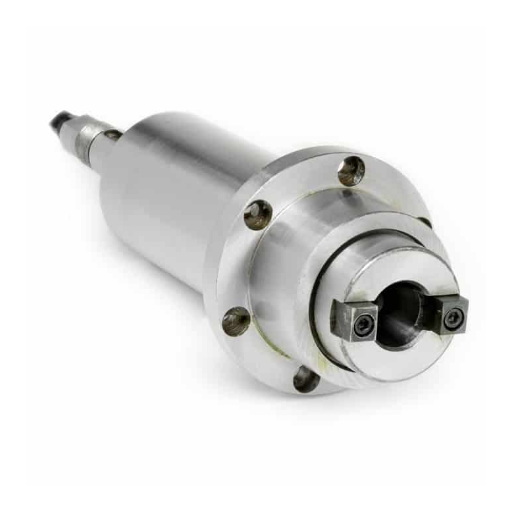
Automotive Industry Applications
Spindle machining is a crucial industrial application given the need for the utmost precision and efficiency in conforming to production standards. The five important functions of spindle machining in the automotive industry are:
- Engine Part Manufacturing: Using spindle machining to create crucial engine parts like cylinder heads, crankshafts, and camshafts. Such finely precise multi-step machining ensures accurate fitting and functioning relative to engine output and fuel efficiency.
- Production of Components for Transmission Systems: Gears, shafts, and housings in automotive transmission systems undergo machining by high-speed spindles so that they retain proper tolerances and a smooth finish for power transfer maximization and durability.
- Brake System Components: Calipers, rotors, and brake pads must be machined to a very high tolerance in the interest of safety and performance. Spindle machining helps in attaining the tight tolerances required by automotive industry standards for brake systems.
- Suspension System Parts: Components such as control arms, knuckles, and bushings are machined with a high degree of precision, which increases vehicle stability and handling. Spindle machining gives such accuracy that these components can seamlessly operate under high stress conditions.
- Wheel and Rim Manufacturing: Wheels and rims are manufactured with tight tolerances using spindle machining to ensure proper balancing and structural integrity, which are vital for a smooth driving experience and safety.
Drastic improvements imparted to the manufacturing process through spindle machining in these instances also reduce wastage; hence, quality is improved, and, in turn, automotive production becomes cost-effective.
Aerospace Industry Applications
Due to the highest accuracy and reliability demanded, spindle machining is paramount in the aerospace sector. Aerospace components must be manufactured within stringent tolerances for safety, performance, and regulatory conformance. The following are five applications of spindle machining in the aerospace industry:
- Turbine Blade Manufacturing: Advanced spindle machining is required to attain aerodynamic precision and heat resistance in turbine blades for jet engines. Superalloys are usually the working materials of the blades, and machining them requires absolute accuracy to assure performance at extreme temperatures.
- Fuselage Components: Aluminum and composite materials for fuselage construction are machined with extremes of precision to ensure exact fit and structural integrity. Spindle machining ensures the reliable assembly of these lightweight yet strong aircraft structures.
- Landing Gear Production: Landing gear components are subjected to high stresses during takeoff, landing, and taxiing. Using spindle machining to work on titanium and other high-grade materials will guarantee durability and safety as per design requirements.
- Avionics Housings: The casings for avionics equipment, which house sensitive electronics, are manufactured with extreme precision. Spindle machining would thus ensure that these housings protect against environmental disadvantages such as vibration, heat, and electromagnetic interference.
- Propeller and Rotor Parts: Propellers for aircraft and rotors for helicopters require dynamic balance anda fine finish for efficient functioning. High-speed precision machining is used to manufacture these components to enhance aerodynamic performance and minimize noise.
Application of spindle machining across aircraft manufacturing ensures satisfaction of stringent quality norms essential for operational safety and efficiency in one of the harshest industries in the world.
Manufacturing and Electronics Applications
Adoption of precision machining and advanced manufacturing methods has revolutionized the electronics industry and facilitated the production of smaller, energy-efficient, and better-performing components. These techniques are vital in the following five applications:
- Printed Circuit Board (PCB) Fabrication: Precision machining is used in PCB manufacturing to ensure that conductive pathways are positioned correctly and to minimize errors. Laser machining or CNC cutting is capable of achieving better than 10-micron tolerances required for high-density PCBs needed in modern electronics.
- Semiconductor Manufacturing: Semiconductor manufacturing requires nanometric accuracy to obtain the minute structures within microchips. Photolithography machines and others used must maintain sub-micron precision, thus maintaining the integrity and performance of the integrated circuits.
- Microelectromechanical Systems (MEMS): MEMS involves precision engineering to manufacture minute sensors and actuators used in smartphones, medical instruments, and automotive control systems. Processes such as etching and micro-drilling are responsible for imparting high precision to the structure for proper functioning.
- Display Panel Manufacturing: Modern-day display technologies like OLED and micro-LED panels demand machining tools capable of providing very fine resolution. Precise deposition of material and screen printing processes ensure that consumer and industrial displays are uniform and durable.
- Connector and Housing Production: Connectors, housings, and enclosures of many types are required by electronic parts to protect those components and make sure that the components work correctly. The presence of complicated geometries will require CNC machining techniques that are repeatable in high-production volumes.
These applications give a glimpse of how precision machining is an indispensable activity for driving innovation, enhancing production potentials, and conforming to stringent industry standards.
Importance of Accuracy and Maintenance
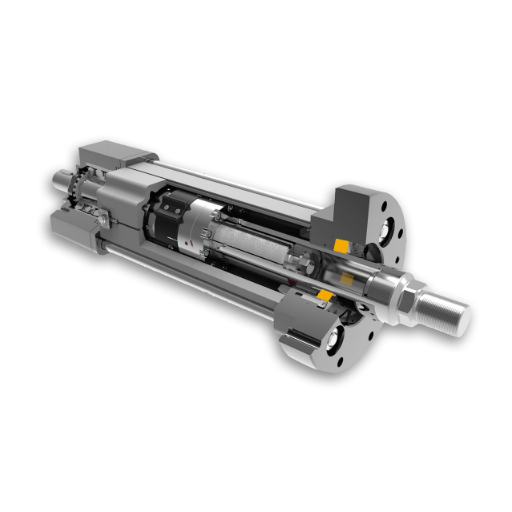
Ensuring Optimal Performance
For peak performance in precision machining, utmost precision and regular maintenance must be maintained. Precision machinery requires very tight tolerances, often in microns, for the components to be true to the specifications. If the machinery is not calibrated regularly, slight variations of all sorts might creep in and cause large errors during production, thereby jeopardizing the whole check on quality and the end-product’s functionality. Tool wear, thermal expansion, and vibration are all factors that may degrade machining accuracy and need to be monitored with care.
Setting up a stringent maintenance schedule goes hand-in-hand. Periodic inspections and cleanings of machine parts, lubrication of any moving components, and calibration of cutting tools will stave off any imminent mechanical failures and needless stoppages. Additional evolution of real-time monitoring systems, especially along the lines of sensor-based feedback implementations, could alleviate predictive maintenance efforts much further by finding potential problems before such problems are allowed to disrupt operations at a very dear cost.
And at the same time, precision and repeatability are still being improved by all machining technologies, including adaptive CNC controllers and automated alignment systems. With the help of these technologies and firm maintenance methods, manufacturers can retain the best machinery performance processes, hence producing more and meeting the stringent demands of modern-day industries superbly.
Regular Maintenance Practices
Machining maintenance involves following a methodical routine to keep machinery performing at peak levels. One critical factor to consider in maintenance is following a comprehensive maintenance schedule that suggests maintenance on a daily, weekly, and monthly basis. Daily checks may consist of cleaning work surfaces, inspection for signs of wear on critical machine parts, and lubrication of moving parts to reduce friction. Weekly and monthly checks are worth considering since these include thorough inspection of vital assemblies, recalibration of instruments, and confirmation of alignments. It has a layered effect to ensure less downtime and a more consistent output.
Furthermore, I advocate applying modern diagnostic methods to check for machine health. Vibration analysis, thermography, and condition monitoring sensors all assist in providing the much-needed information concerning the actual status of the machine. By early detection of any anomalies, like excessive vibrations or heat generation, I would be in a position to fix questions arising from potential failures before they turn into real big ones. This method guards the efficiency right from being compromised yet at the same time extends equipment life, which in turn cuts down the total cost of ownership.
Yet training operators to spot things that look out of the ordinary and report them is as important as the other maintenance practices. When operators are well-trained, they can become the first line of defense against any impending crisis. Also, using operators’ feedback helps modify maintenance schedules so that minor issues can be addressed before they develop into major ones. This set of options demonstrates dedication to the ongoing reliability and performance of machining arrangements.
Technological Advancements in Spindle Machining
Innovations in CNC Technology
Advances in CNC machining have become the essential backbone of modern manufacturing, granting immense precision, efficiency, and capability. Central to this has been the automation and the association of AI with CNC systems. AI-driven algorithms implement optimizations by evaluating machining process performance data in real-time, thereby serving to predict maintenance and reduce downtime for operations. Edge computing, meanwhile, has grown into an equally important technology in enhancing data processing near the machine, thus improving responsiveness and reliability.
Perhaps the next most considerable development lies in multi-axis machining. The inventiveness of modern CNC machines has allowed 5-axis and sometimes even 7-axis machining to facilitate the manufacturing of extremely complex geometries with minimum setups, thus cutting production time. Another technology gaining traction is the integration of virtual machining using digital twins, to simulate machining operations in a virtual environment to identify roadblocks or inefficiencies before physical production.
Material compatibility also sees an advancement, increasing the ability of CNC machines to handle larger substrates of composite materials, ceramics, and modern alloys. Such flexibility ensures CNC machining still has industrial importance in aerospace, automotive, and medical device manufacturing. With continued innovation, CNC thus continues to shape the trajectory of precision engineering and high-performance manufacturing.
Automation and Smart Manufacturing
Offering automation and smart manufacturing as services, with efficiency and scalability, has been manufactured in the current scene. It sees the integration of IoT devices along with AI and ML technologies for production lines’ real-time monitoring, predictive maintenance, and site optimization. Smart sensors and data analytics empower manufacturers in a manner whereby downtime is curtailed and the proper allocation of resources can be done.
Thus, from the new phenomena of robotics, the advancement of automated systems has been visualized as cobots that assist workers with total safety assurance. Thirdly, cloud technologies will cumulatively centralize the data storage and processing, making the smart manufacturing ecosystem uninterrupted, scalable, and distributed.
According to industry data, a manufacturing plant that practices smart manufacturing indicates a productivity increase of over 30% and a reduction in operational costs by as much as 20%. These figures highly stress the need for a full-fledged digital transformation strategy. Ergo, in other words, automation and smart manufacturing have ceased to be a side option; rather, these have become imperative for any business aspiring to compete in an ever-complicated and technology-driven marketplace.
High-Speed Spindle Developments
High-speed spindle technology continues to be evolving, with almost every facet concerning precision manufacturing and efficiency dictating modifications in the modern manufacturing world. Spindle design innovations are now geared towards achieving higher rotation speeds without compromising stability, thermal aspects, or accuracy. More and more advanced materials, such as ceramics or carbon composites, are being considered to fabricate spindles that can bear extreme forces exerted at very high rotations while keeping vibration levels at a minimum.
Intelligent systems are now being integrated into these machines, with real-time monitoring sensors and adaptive controls working on advanced algorithms to offer dynamic control of operations. This ensures consistency of performance and also reduces the likelihood of tool failure, with both factors contributing to reduced downtime and maintenance costs. Recent benchmarks show an increase of about 25% in lifecycle performance with the latest spindles featuring integrated monitoring systems, thus greatly overshadowing the initial costs.
High-speed spindles are capable of planner integration with automation systems such as robotic machining cells into smart manufacturing ecosystems. Such integration of production technologies thereby gives manufacturing an extra boost in terms of speed, allowing faster response to the ever-growing demand for highly complex and precision-engineered components specialized across industries, broadly revealed as aerospace and medical devices.
Improving Efficiency in Spindle Machining Processes
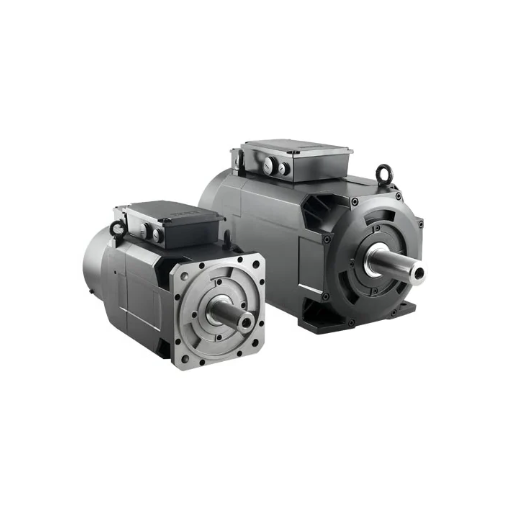
Techniques for Reducing Waste
The reduction of waste in spindle manufacturing is paramount in the optimization of resource utilization and the reduction of operating costs through an environmental ecosystem. One way to do this is by using advanced toolpath optimization algorithms, which, in their operation, ensure that the tool moves only as much as necessary, minimizing situations of loss of materials and damage to the machine itself. Such an algorithm incorporates simulation software to simulate machining results while adjusting the cutting paths for utmost efficiency.
Another major contributor to waste reduction is the real-time monitoring system. Sensors and IoT systems observe spindle performances, tool wear, and vibration levels, while operators make decisions from the collected data to intervene before defects or over machining can happen. Maintenance can, therefore, be carried out in a predictive manner, thereby ensuring the equipment is working at maximum efficiency, in turn avoiding sudden breakages resulting in scrapping of material.
Transitioning toward near-net shape techniques, including additive manufacturing or state-of-the-art casting procedures, is also a great waste abatement idea that diminishes excessive material removal. In essence, it also kills waste along with forming an energy demand.
Using recyclable materials and developing circular manufacturing concepts will take sustainability even further. Presently, several industries are focused on recycling chips and machining by-products into raw materials for further use. This type of development is an updated balancing initiative for production and environmental requirements. Together, these available techniques will streamline the process of spindle machining while presenting it as a lean, efficient, and sustainable process.
Enhancing Speed and Productivity
To attain greater speed and productivity in spindle machining, manufacturers take advantage of advanced tooling technologies, cutting, and process monitoring systems. High-speed precision tools made of polycrystalline diamond (PCD) or cubic boron nitride (CBN) allow for cutting at higher speeds without reducing tool life. On the other hand, adaptive control systems enable machines to automatically adjust their spindle speeds and feed rates, cutting down on downtime and enhancing output.
Other newer digital innovations, including the installation of Industrial Internet of Things (IIoT) gadgets, charter websites for performance and cycle times. These can be used to analyze bottlenecks and optimize workflows, as well as predictive maintenance needs. Combining these technologies with advanced automation – with robotic loading/unloading, for instance – will result in considerably increased throughput at no compromise to accuracy and quality of machine finishing operations.
Simultaneously, CAM software-generated simulations provide manufacturers the tools to seek out and address inefficiencies ahead of production. Properly applied along with greener practices, these solutions will ensure that industries maintain speed and productivity in machining while allowing them flexibility to remain competitive.
Ensuring Consistent Output
To deliver consistent outputs, advanced computational tools and the strict observance of best practices in manufacturing are of utmost importance. Automation technologies, coupled with CAM instruments, afford such a high repeatability to the process that any human-induced variation is practically reduced to zero. This condition becomes extremely desirable when one is in a high-volume environment, as even a slight mismatch can cascade into large-scale inefficiency downstream. Real-time monitoring systems can, furthermore, be employed to maintain accuracy by alerting and correcting deviations as they happen, instead of depending on post-process inspection.
It is paramount to establish consistent outputs through a data-based approach. Modern data analytics and machine learning algorithms enable manufacturers to adjust operational parameters in real-time, including instances such as tool wear, feed rate adjustments, or machinery recalibration as minor deviations surface. In addition to the data unearthed by IoT-capable machinery, many other bases contribute to predictive maintenance, thus lessening downtimes. In the least disruptive way possible, and ensuring every single run is precise, CAM-driven simulations are informed by these insights as well.
Lastly, stringent quality control procedures remain the core of constant deliveries. Applying statistical process control (SPC) methods can highlight anomalous variation in production processes and identify trends before they grow into bigger problems. The consistent calibration of equipment, the use of precision instrumentation, and conformity with ISO and ASTM standards will also assist in ensuring every part conforms to exact individual specifications. In tandem with the schooled application of advanced technology frameworks makes these make a highly productive environment in which to carry out manufacturing and ensure consistent high-grade delivery despite stringent timelines and budget-based constraints.
Frequently Asked Questions (FAQ)
Q: What is spindle machining, and how does it work?
A: Spindle machining refers to the process of using a spindle, which is a rotating axis, to perform various machining operations like drilling, milling, and grinding. The spindle is a rotating component that holds cutting tools and is designed to rotate at high RPM (revolutions per minute) to achieve precise machining of materials such as metal, wood, and plastic. The built-in motor provides the necessary torque to drive the spindle, enabling efficient machining.
Q: What are the different types of spindles used in machining?
A: There are various types of spindles used in machining, including belt-driven spindles, direct-drive spindles, and high-torque spindles. Belt-driven spindles are commonly used in milling machines for their versatility and ability to handle different sizes of cutting tools. High torque spindles are suitable for heavy-duty applications and are often found in metalworking and mass production setups.
Q: How does spindle machining apply to woodworking?
A: In woodworking, spindle machining is essential for creating intricate designs and precise cuts. With the use of rotary tools equipped with a chuck or collet, woodworkers can perform various tasks such as routing, shaping, and milling. The ability to adjust the spindle’s RPM allows for optimal cutting speeds based on the wood type and size, ensuring a quality finish.
Q: What are the advantages of using spindle machining in metalworking?
A: Spindle machining offers several advantages in metalworking, including high efficiency and precision. The rotating axis of the spindle allows for accurate cutting and shaping of metals like steel, while the built-in motor provides consistent torque. Additionally, the ability to use different tools makes spindle machining versatile for various applications, from small components to large gantry machining tasks.
Q: Can spindle machining be used in mass production?
A: Yes, spindle machining is widely used in mass production due to its speed and efficiency. The ability to quickly change tools and maintain high RPMs allows manufacturers to produce large quantities of parts with consistent quality. Whether working with plastic, metal, or wood, spindle machining can be adapted to meet the demands of high-volume production.
Q: What factors should be considered when choosing a spindle for machining?
A: When selecting a spindle for machining, several factors should be considered, including the type of material being machined, the required torque, and the size of the workpiece. Additionally, the spindle’s RPM capabilities, whether it is manual or automatic, and the overall budget for the equipment should also be taken into account to ensure the right fit for the intended application.
Q: How do you maintain a spindle to ensure optimal performance?
A: To maintain a spindle for optimal performance, regular cleaning and lubrication are essential. Ensuring that the spindle is free from debris and properly lubricated will help maintain its efficiency and longevity. It’s also important to check for any signs of wear or damage and to replace parts as needed to avoid disruptions in machining operations.
Q: What is the role of torque in spindle machining?
A: Torque plays a crucial role in spindle machining as it determines the cutting force applied during machining operations. Higher torque is necessary for machining harder materials like steel, while lower torque may suffice for softer materials like plastic or wood. The spindle’s design, including its built-in motor, influences the amount of torque available, impacting the overall machining efficiency.
UCTH213-40J-300 with Setscrew(inch)
CNSORDERNO: Normal-duty(2)
TOGN: UCTH213-40J-300
SDI: B-R1/8
SD: 2 1/2
UCTH212-39J-300 with Setscrew(inch)
CNSORDERNO: Normal-duty(2)
TOGN: UCTH212-39J-300
SDI: B-R1/8
SD: 2 7/16
UCTH212-38J-300 with Setscrew(inch)
CNSORDERNO: Normal-duty(2)
TOGN: UCTH212-38J-300
SDI: B-R1/8
SD: 2 3/8
UCTH212-36J-300 with Setscrew(inch)
CNSORDERNO: Normal-duty(2)
TOGN: UCTH212-36J-300
SDI: B-R1/8
SD: 2 1/4
UCTH211-35J-300 with Setscrew(inch)
CNSORDERNO: Normal-duty(2)
TOGN: UCTH211-35J-300
SDI: B-R1/8
SD: 2 3/16
UCTH211-34J-300 with Setscrew(inch)
CNSORDERNO: Normal-duty(2)
TOGN: UCTH211-34J-300
SDI: B-R1/8
SD: 2 1/8












